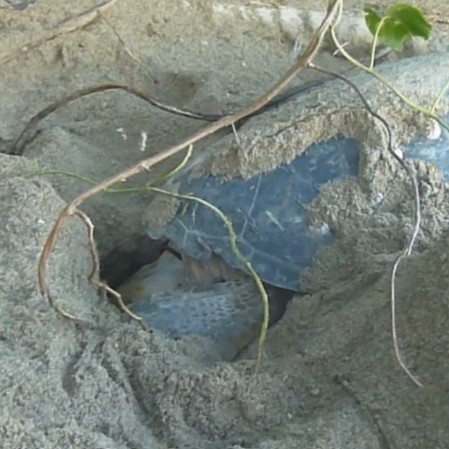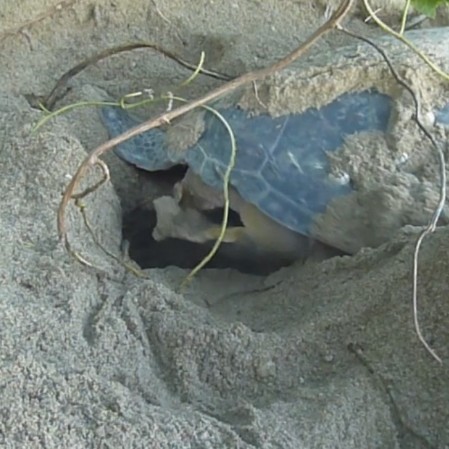A quick guide to
Sea Turtle Biology
Sea turtles are air-breathing reptiles with sensory and body adaptions for life in the ocean.
They spend almost their entire life at sea.
Only the female will come ashore for a few hours when it is time to lay her eggs.
Coming up for air
Sea turtles have lungs not gills like fish, so they cannot breathe under water but have to come up for air in regular intervals. A grown sea turtle at rest may hold its breath for up to seven hours. During this time, the heartbeat will slow down considerably to preserve oxygen.
Such long periods of submergence will be significantly shorter in active or stress situations, e.g. when caught in a fishing net. While struggling to free itself, the stored oxygen will be used up fast - a sea turtle may drown!
Most sea turtle species are able to dive to a depth of up to 290 meters. The deepest dive ever recorded was that of a Leatherback turtle (Dermochelys coriacea) : 1,200 meters!
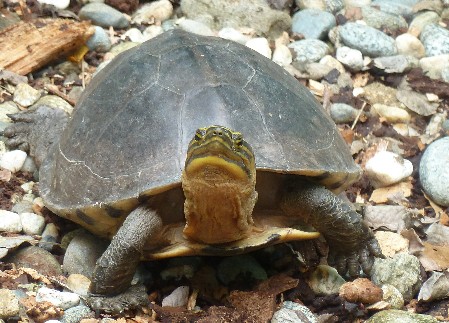
The shell
Contrary to their terrestrial and fresh-water relatives, a sea turtle cannot retract its head and limbs into the shell.
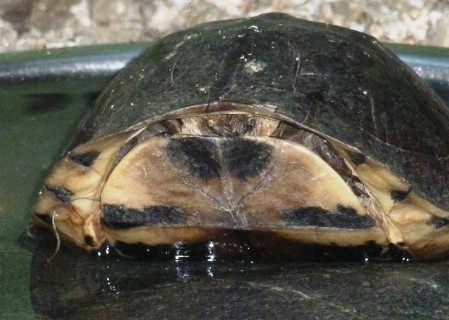
Size Comparison
This single scute of an adult Hawksbill carapace measures approx. 15 cm in length. That is around 2.5 times the size of a hatchling.
In comparison: the single scute of a sea turtle baby would measure around 8 mm.
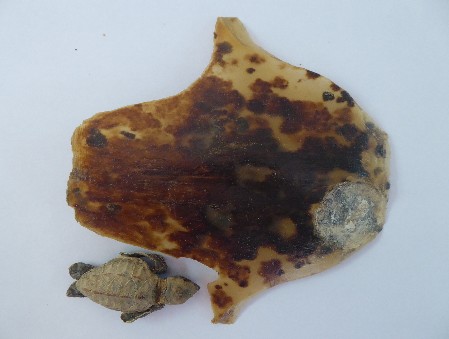
Which species?
We can identify the sea turtle species by
- the form of the head
- the pattern of the head scutes
- the shape of the shell
- the number and pattern of the carapace scutes
An illustration showing the differences of sea turtle species by comparing head shapes and carapace scutes
Moving around
Another distinctive feature are the flippers:
the front pair is large and strong, making it easier for the sea turtle to cruise through currents and waves. The pair of smaller hind flippers serve as rudder.
It is quite an effort for the female to hoist her body out of the sea and move around the beach in search of a suitable nesting place. Her gait leaves a characteristic trail in the sand called a "crawl".
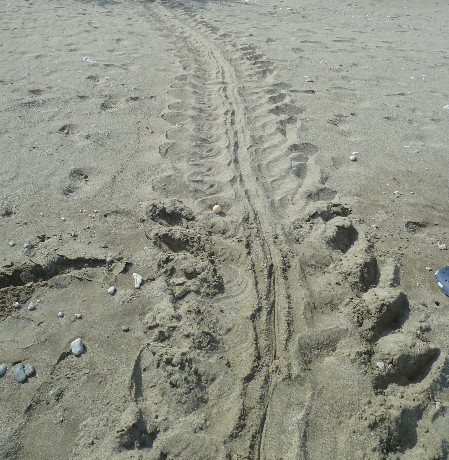
For females, the hind flippers have an important second purpose - they are used as "shovels" when excavating and closing the egg chamber (view video clip: "nesting process").
The Senses
Sight
Short-sighted when out of the water, sea turtles can see very well when below the waves. The ability to see bioluminescene is sufficient to detect prey at night and in dim light conditions at greater depths. They are sensitive to white and colored light sources but not to the orange-red range of the visible spectrum. Pawikan Patrollers use red flashlights during night patrols and when releasing hatchlings in the dark.
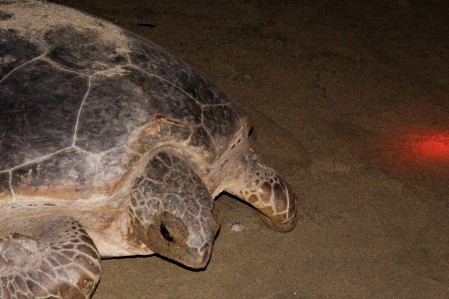
Photo credit: Friedhelm Krenz (Night Patrol/July 2016)
Taste
Next to nothing is known about a sea turtle's taste. Though they have no teeth, but they have powerful serrated jaws to aid them in tearing apart jellyfish and sponges, crushing crustaceans and molluscs and biting off sea grass.
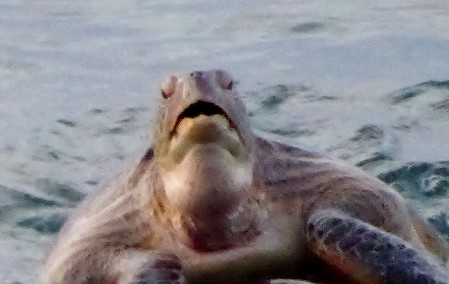
Hearing
Ears are not visible externally; they are covered by a protective layer of skin with another layer of fat underneath. It is assumed that this unique feature channels low-frequency sounds into the inner ear.
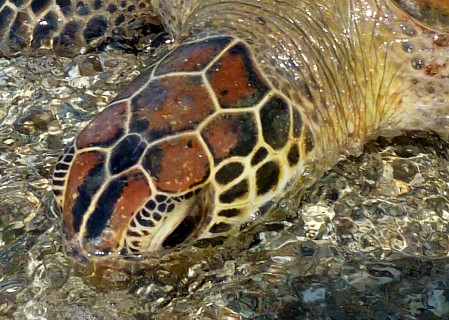
Touch
The soft body parts of a sea turtle are sensitive to touch and so is the carapace. Thin nerves run along the shell and detect pressure changes associated with touch.
Smell
Studies show that sea turtles have a well-developed sense of smell. This sense aids when hunting for prey in dark and murky waters. It is further believed that smell contributes to how female sea turtles find their way back to their birth beach.
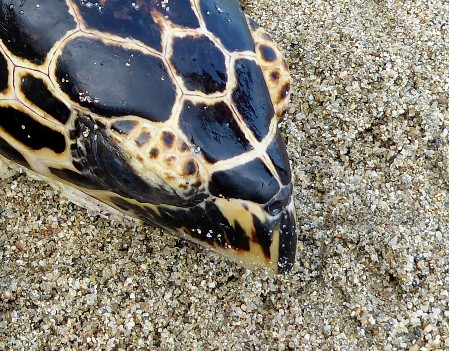
Magnetic Sense
An "internal compass" for navigation?
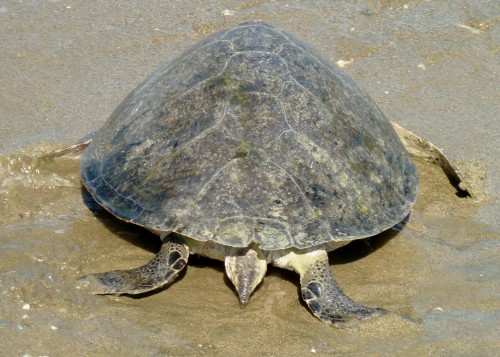
How are sea turtles able to migrate thousands of miles back to the place where they emerged from the nest and first entered the sea decades ago as hatchlings?
This phenomenon is called "natal homing" and it's still something of a mystery, not yet fully understood. One theory suggests that sea turtles can detect both the angle and the intensity of the earth's magnetic field. Thereby they are able to distinguish their global position by latitude and longitude which leads them back to the general home area.
It is further assumed that sea turtles are able to imprint or remember certain chracteristics of their birth beach (e.g. through smell), which then aids in identifying the right beach within the home area.
